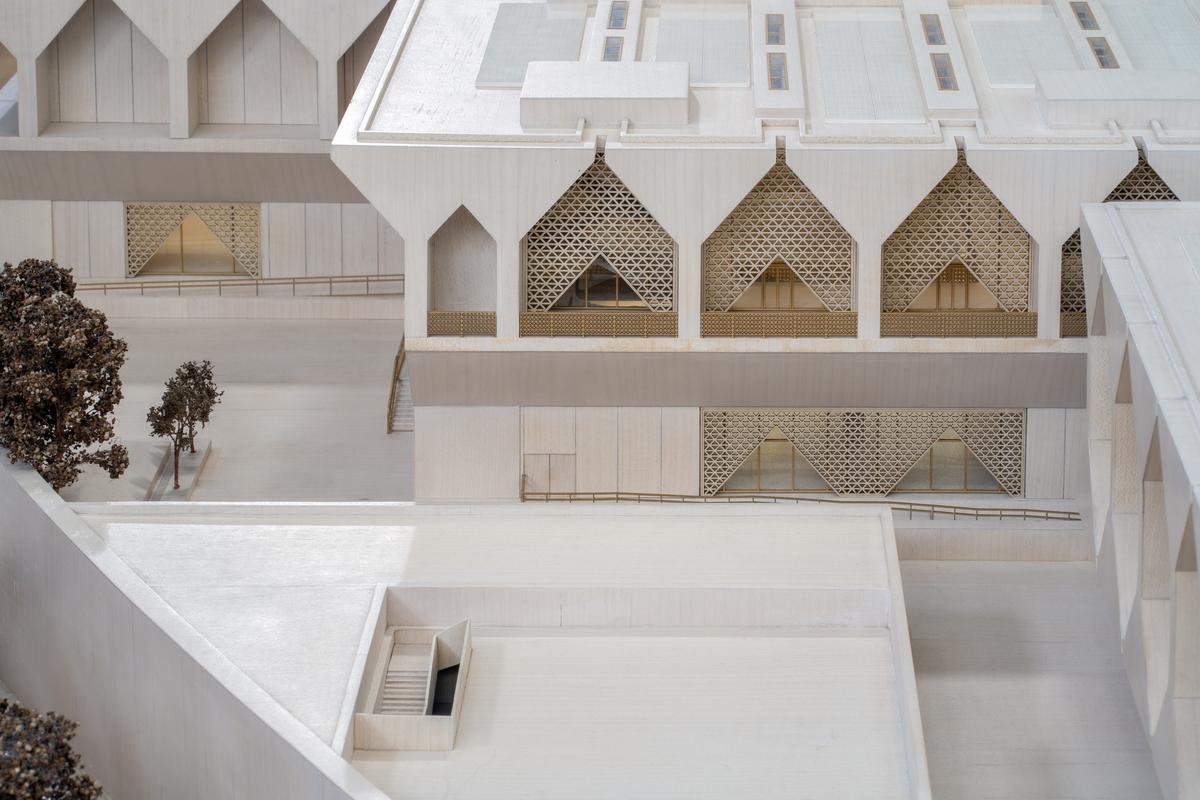Did you know that the city of Basel, Switzerland with a population of around 1,75,000 people has 37 museums? A similar city division in India, such as Bandra East, Mumbai has that many people. Upmarket Bandra however has no museums and the city, barely a handful.
India has a slew of mega museums on the horizon. The Yuga Yugeen Bharat National Museum is set to span approximately 1,55,000 square metres in New Delhi and is part of the Government of India’s major foray in this space. The Kiran Nadar Museum of Art (KNMA), slated to open in 2026, will present 1,00,000 square metres in the national capital. In Gujarat, the National Maritime Heritage Complex in Lothal will span 375 acres and open to the public in phases starting this year.

A model of the new KNMA museum
| Photo Credit:
Rakesh Anand
These mega cultural powerhouses on the horizon aim for the future even as they present treasures from our shared historic past. As the country shrugs off its colonial cloak, and surges into the second quarter of this century, here are some pointers for it to reimagine its museums as future forward vibrant cultural institutions.
Spectacle buildings by star architects
When housing priceless treasures, most museum planners turn to a well-established architect, with a brief to peg the building as a spectacular talking point. So, whether it’s architect Frank Gehry who put Bilbao, Spain on the map with the Guggenheim Museum or the technology aided soaring glass structure of the Fondation Louis Vuitton in Paris or the Benesse House Museum in Naoshima, Japan by Tadao Ando, the museum buildings are ambitious attractions in themselves. Ando’s contextual architecture inspired by his own personal philosophy translates into powerful spatial experiences in the buildings he creates and is ideal for us to consider.

Guggenheim Museum, Bilbao
| Photo Credit:
Getty Images
In India, a lone example of an extraordinary museum building in recent times is the Smritivan Earthquake Memorial Museum in Bhuj, Gujarat by late architect B.V. Doshi. It was honoured with the UNESCO Prix Versailles 2024 award and named among the seven most beautiful museums in the world. Attracting several lakh visitors a year, it is a compass for future museums.

Smritivan Earthquake Memorial Museum, Bhuj
Better storytellers in the room
Powerful storytelling that presents historical context or meaning is relevant more than ever in museums. The average city human today is blitzed with images from wake up to lights out. Phones, screens, print media, billboards and more have ensured shorter attention spans and a reluctance to read. It, therefore, takes more than the printed label alongside a museum artefact to enchant a visitor. The US $1 billion Lucas Museum of Narrative Art, slated to open early next year in Los Angeles, California offers a glimpse of the museum of the future revolving solely around visual storytelling. Embedded in its name is its commitment to the narrative.
Palace museums in India in Jodhpur and Udaipur in Rajasthan for example, pepper their historical complexes with local performing artists. The soulful strains of a flute or the twirling, colourful folk dancers enrich visitor experience and make compelling memories. Effective presentation of precious museum valuables requires a mix of good exhibition design, lighting, security and beauty, all wrapped up in engaging storytelling.

A mini-Quran from Partition
| Photo Credit:
Madhavi Jain/Museum of Material Memory
Welcoming millennials
As a non-millennial, I offer the definition of this term for this argument as any young person with easy and constant access to technology and social media. Millennials today have avatars that simultaneously reside across a bewildering number of platforms. Like you and I brush our teeth in the morning, they share personal stories of everything from getting dressed (GRWM), community and caste trauma, complicated family histories, immigrant hostilities and diaspora celebrations. Barring the mundane, some of the stories are visceral, raw and filled with emotion.
Now, take these young persons to a museum filled with objects, screens and diagrams. Nothing. There is no connect. These audiences want histories told through stories. They also want immediate access to photograph, share, meme and speak. It is their language and our major Indian museums with a blanket ban on photography, videography and restricted access to collections shut out this age group.

A sewing machine as old as independent India
| Photo Credit:
Aanchal Malhotra/Museum of Material Memory
Not just a game
Did you know the Tate Modern is a Pokéstop? Have I lost you, and may I explain? The highly addictive Pokémon GO released in 2016 is an augmented reality game. With over a billion downloads, players surprisingly cut across all age groups and chase Pokémon monsters in the real world, including museums such as the Tate. Museums as geolocations have lured gamers and thereby bolstered engagement, because once you enter a museum, even the most resilient visitor will find fascination in something. The Nintendo Museum, Kyoto that opened last year enables visitors to experience the nostalgia of early video gaming.
Nintendo Museum, Kyoto
| Photo Credit:
Reuters
Meanwhile in India, tech museums or even the incorporation of high-end tech is still in a nascent stage and leaves much to be desired.
The writer is the founder-director of Eka Archiving Services.
Published – April 17, 2025 05:06 pm IST

